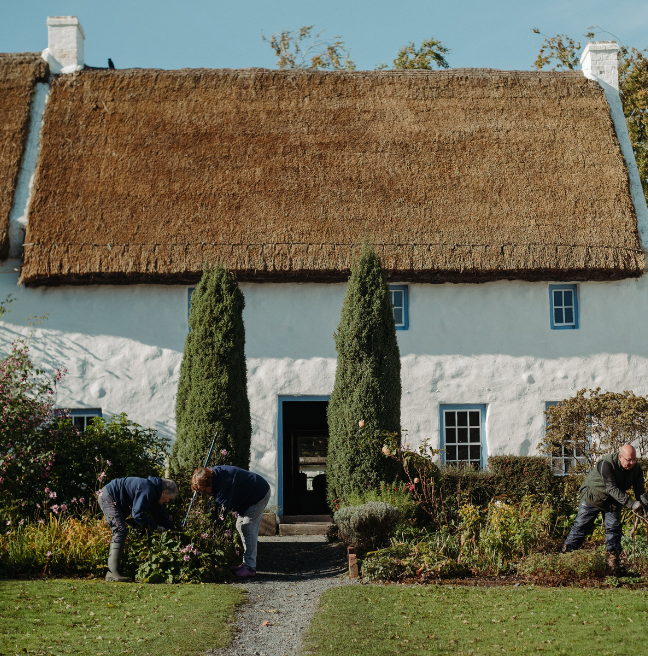
fiendish fungi
What festers in the forest? Hallowe'en is fast approaching, and it's the time of year for fear - but fear not these fiendish fungi! Join Curator of Botany Rhonda Ridley as we explore some fungi with nightmarish names, that aren't as nasty as they seem.
Witches' butter
Tremella mesenterica, common name 'witches’ butter' or 'yellow brain fungus'.
This is an easy-to-spot, very distinct species of jelly fungus. Its structure is highly lobed or brain-like, bright yellow-orange, with a slimy, gelatinous feel when wet. It is a parasitic fungus that feeds on fungi; those fungi in turn feed on deadwood. It is found throughout Britain and Ireland. Autumn and winter are good times to look for this strange looking species. You will find it in broad-leaved woodlands such as oak woods or on gorse.

Black Witches' Butter
This species Exidia glandulosa is another jelly fungus in the family Auriculariaceae.
It is one of the species of fungus that decays recent dead wood often while it is still attached to the tree. You will find it in broad-leaved woodlands typically on oak. It can be identified by its shiny, black, pimpled upper surface. Usually they are around 3 centimetres in length, but have been known to reach clusters of up to 20 centimetres.

Jelly Ears
Jelly ear fungus, Auricularia auricula-judae, is a very common fungus in Northern Ireland.
You can find it growing on trees such as elder (Sambucus nigra) in damp, shady places. Look for tan-brown brackets, that are wrinkly on the inside and resemble the shape of a human ear. The scientific name comes from the latin word auricula, meaning ear. They feel fleshy, gelatinous or jelly-like to touch when fresh and hard when dry.

Witches' broom
Taphrina betulina is an interesting fungus present on some silver birch trees at the Ulster Folk Museum.
It is a yeast-like fungus known as an ascomycete or sac fungus. Many aspects of its biology are unknown and it is relatively understudied. Look for a mass of small twigs growing from a single point up in the branches of the tree. On first look it could be mistaken for a birds nest, but it is actually a structural alteration caused by the fungus Taphrina betulina. They are a common natural occurrence that do not cause any harm to the tree.

You might also like
Foraging in Autumn
Join Clare from Feasting on Weeds as we forage at the Ulster Folk Museum.
Tree Nursery Volunteering Sessions
Get hands-on with our Tree Nursery at the Ulster Folk Museum
Green Gym at Ulster Folk Museum
Get hands-on and help us restore our cottage gardens at our next volunteering session


